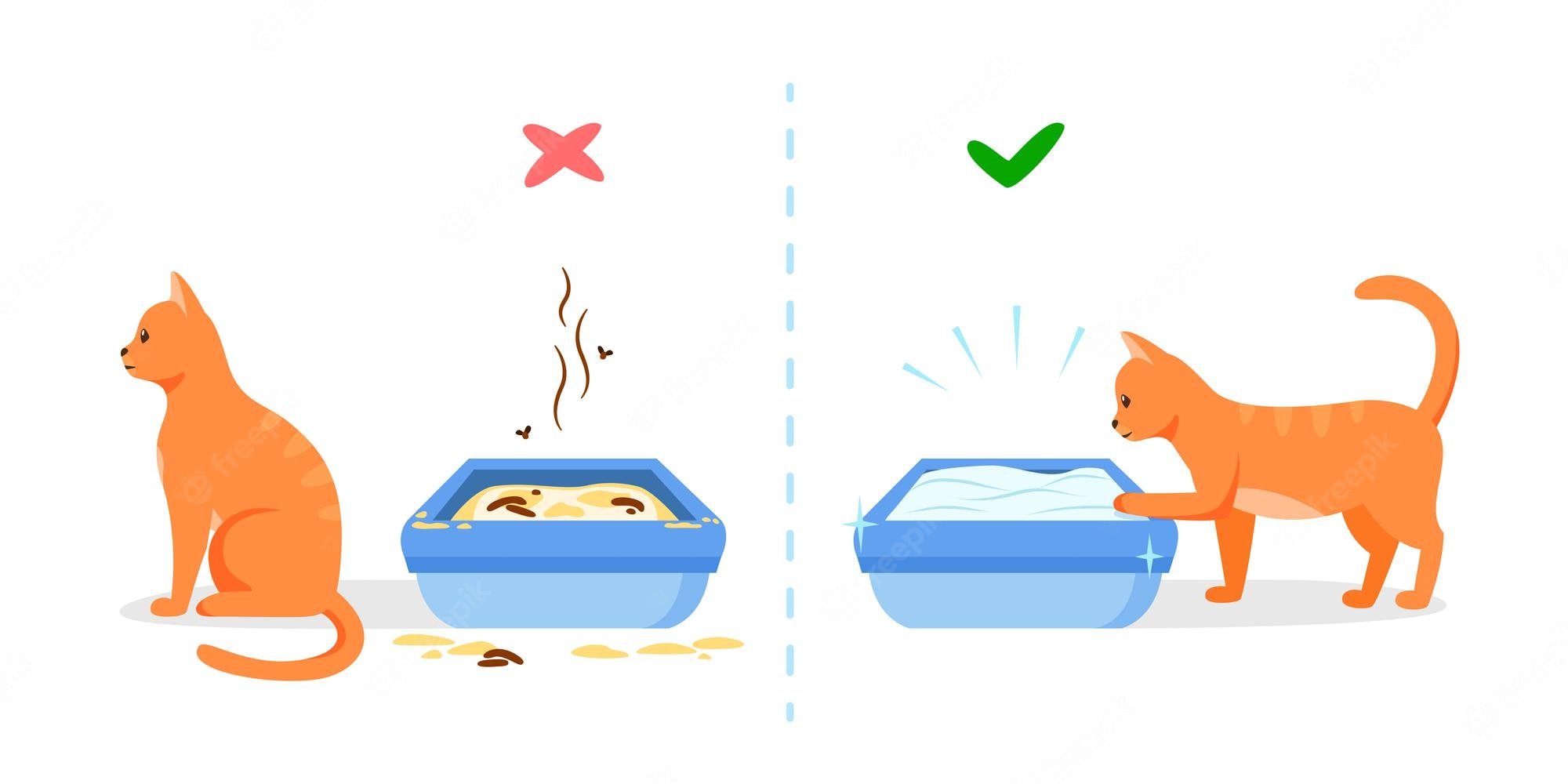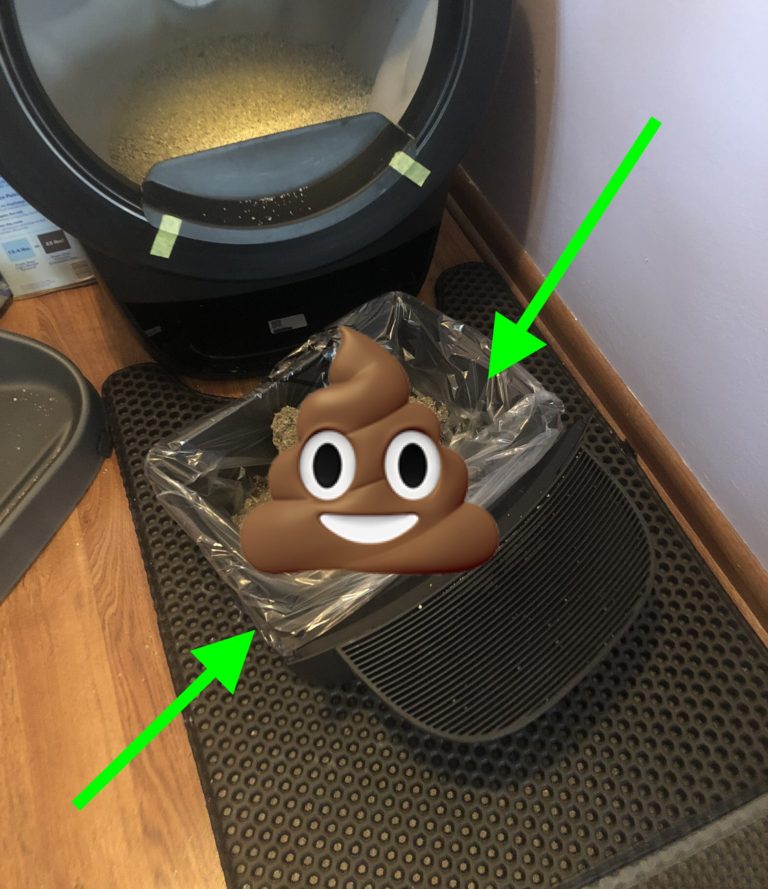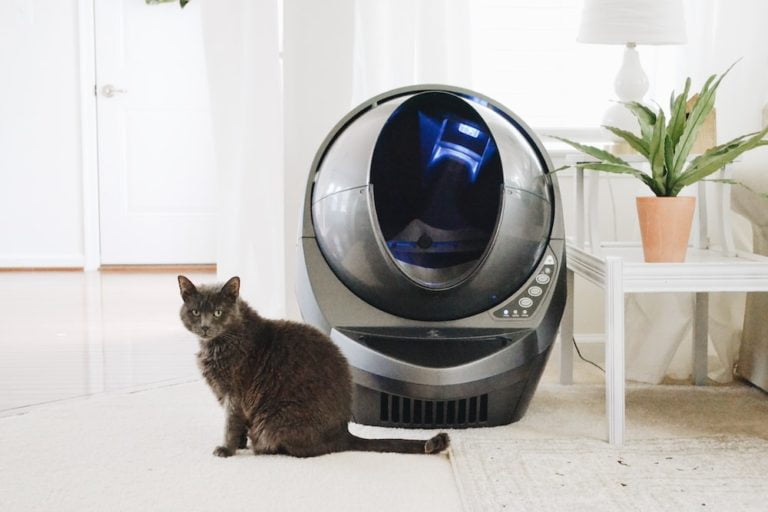7 Ways to Deal with Litter Box Problems
Image Source: FreeImages
Litter Box Problems – UGH!
Because cats are territorial creatures, the litter box becomes a natural place for anxiety to develop and reside. Even with regular maintenance and cleaning, litter boxes can still become a source of frustration for cat owners and their feline friends.
However, icky, smelly, or hazardous situations with your cat’s litter box can be avoided by being observant, understanding your cat’s natural behaviors, and taking proactive steps to avoid potential problems.
Below we’ve compiled SEVEN tips on how you can deal with litter box problems before they become a crisis. But before we get into that…
- Litter Box Problems – UGH!
- Don’t Punish Your Cat – Ever!
- Most Cats Want:
- Common Behavior Problems & Their Usual Solutions:
- 7 Ways to Deal with Litter Box Problems
- 1. Plan for Multiple Litter Boxes
- 2. Clean the Box More Often
- 3. Use the Right Kind and Right Amount of Litter
- 4. Adjust the Lighting
- 5. Bored Cats are Problem Cats
- 6. Watch for Red Flags 🚩🚩 and Find Out Why
- 7. Have a Conversation with Your Vet
- Conclusion
- Get Your FUN BOOK Today!
Don’t Punish Your Cat – Ever!
When we encounter litter box problems, we want to solve them and fast. However, when we are frustrated, we sometimes make decisions that are not in the best interest of our pets. If you are considering punishing your cat for not using the litter box, stop and take a breath.
- NEVER rub your cat’s nose in urine or feces
- NEVER scold your cat or carry them to the litter box
- NEVER confine your cat to a small room with the litter box
- NEVER clean up accidents with an ammonia-based cleaner
If you have been diligent in monitoring your cat’s health and routine, it is unlikely that they have been quite naughty and avoided the litter box on purpose. Cats are territorial and anxious creatures, and they often avoid the litter box because they are feeling threatened. You are the only one who can solve the problem.
If you are frustrated with your cat’s litter box issues, it is better to remove yourself from the situation until you can think clearly. Take a break and then come back with a clear head to have a conversation with your cat about the issue. =)
Most Cats Want:
- Clean litter box
- Large litter box
- No liners or hoods
- Clumping unscented litter
Common Behavior Problems & Their Usual Solutions:
Although rare, about 10% of cats experience litter box problems. Before we get into the seven ways to deal with litter box problems, here are some common specific problems and their usual solutions.
Potty on the side of the litter box: The litter box walls are likely too short or the litter box is too small.
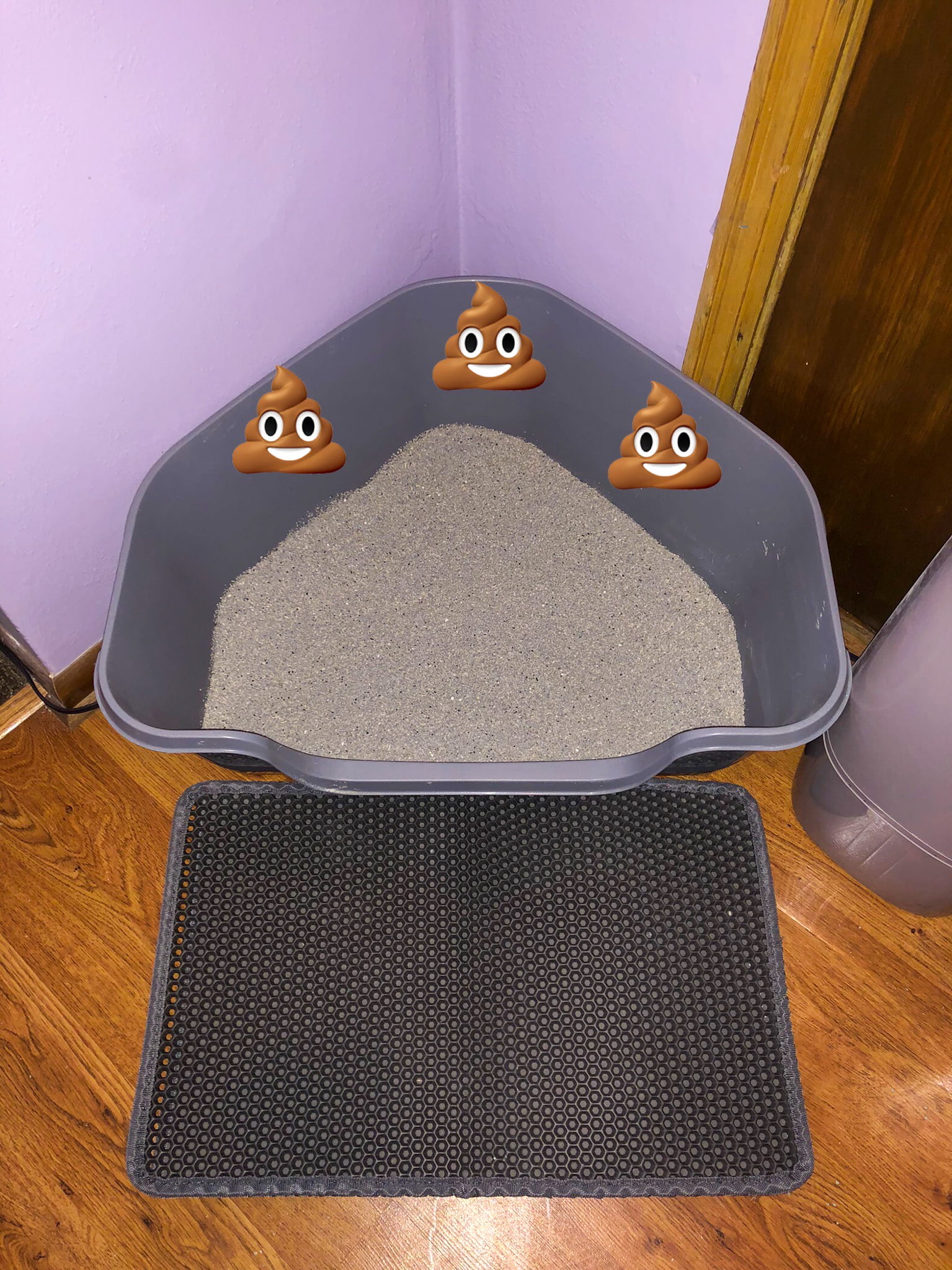
Potty next to the litter box: The litter box location, items near it, or something about the box specifically are likely preventing them from going in the box. Is the litter box cleaned regularly?

Potty way outside of the litter box: Please take your cat to see the vet immediately or call your vet’s office to start. Often they can help you with what to do next. This is often an indicator of an underlying medical condition that may require treatment.
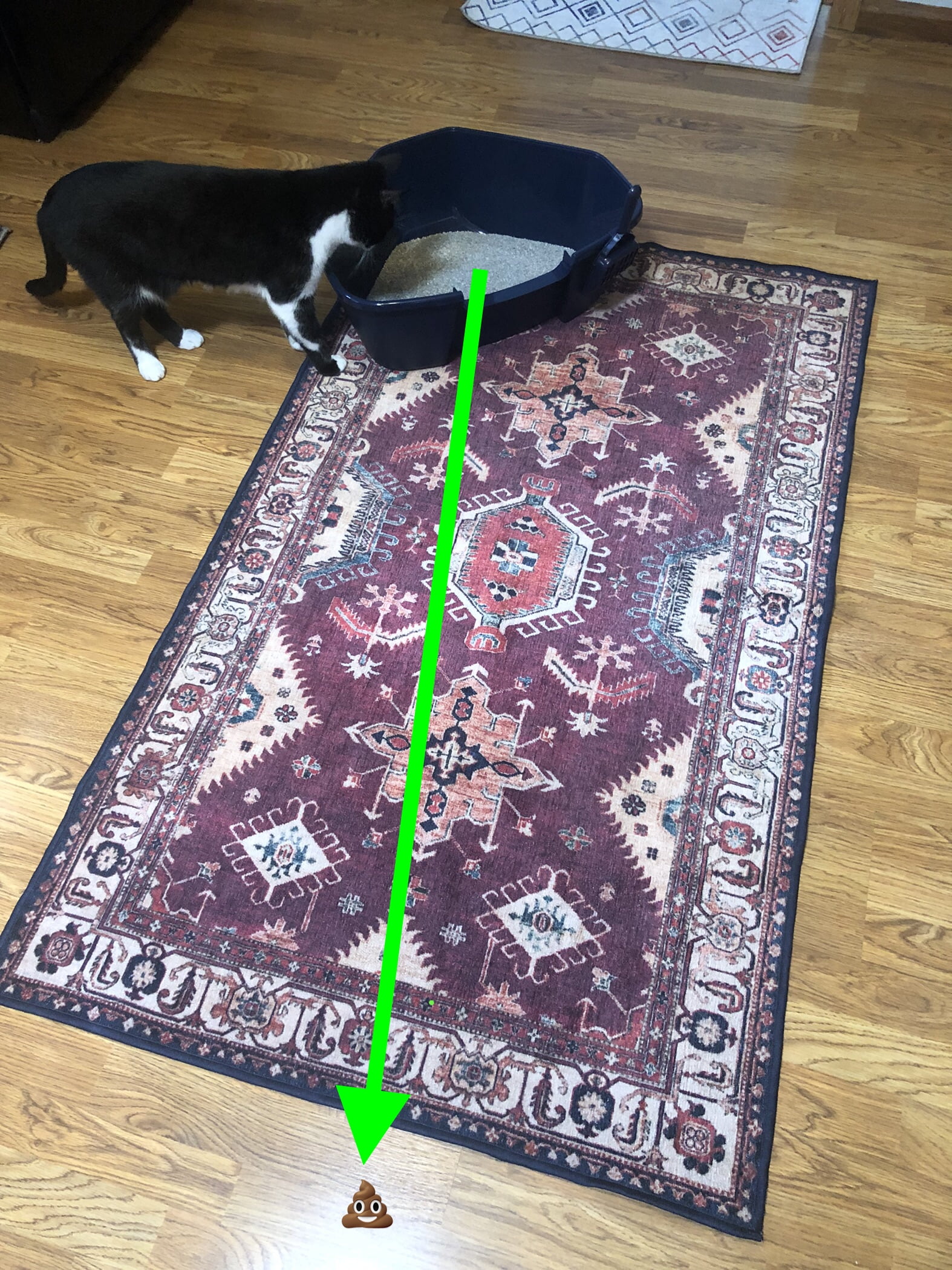
Guarding their favorite litter box: Not enough litter boxes.
Not covering their poop: Likely momma cat didn’t do it and set the example, or it is a dominant cat working to keep other cats out of their territory. Either way, you’ll want to provide multiple litter boxes because asking them nicely won’t work.
7 Ways to Deal with Litter Box Problems
1. Plan for Multiple Litter Boxes
As you read through this list, it will become clear that litter box problems are often a product of territorial issues, stress, and anxiety. When cats feel stressed or threatened in their environment, they are likely to avoid the litter box and find a safer place to do their business.
For this reason, experts often state the “one-plus-one” rule for litter boxes, meaning one litter box per cat, plus one more. They also often suggest litter boxes on each floor of your home. This is the best way to ensure your cat has access to a litter box when they need it.
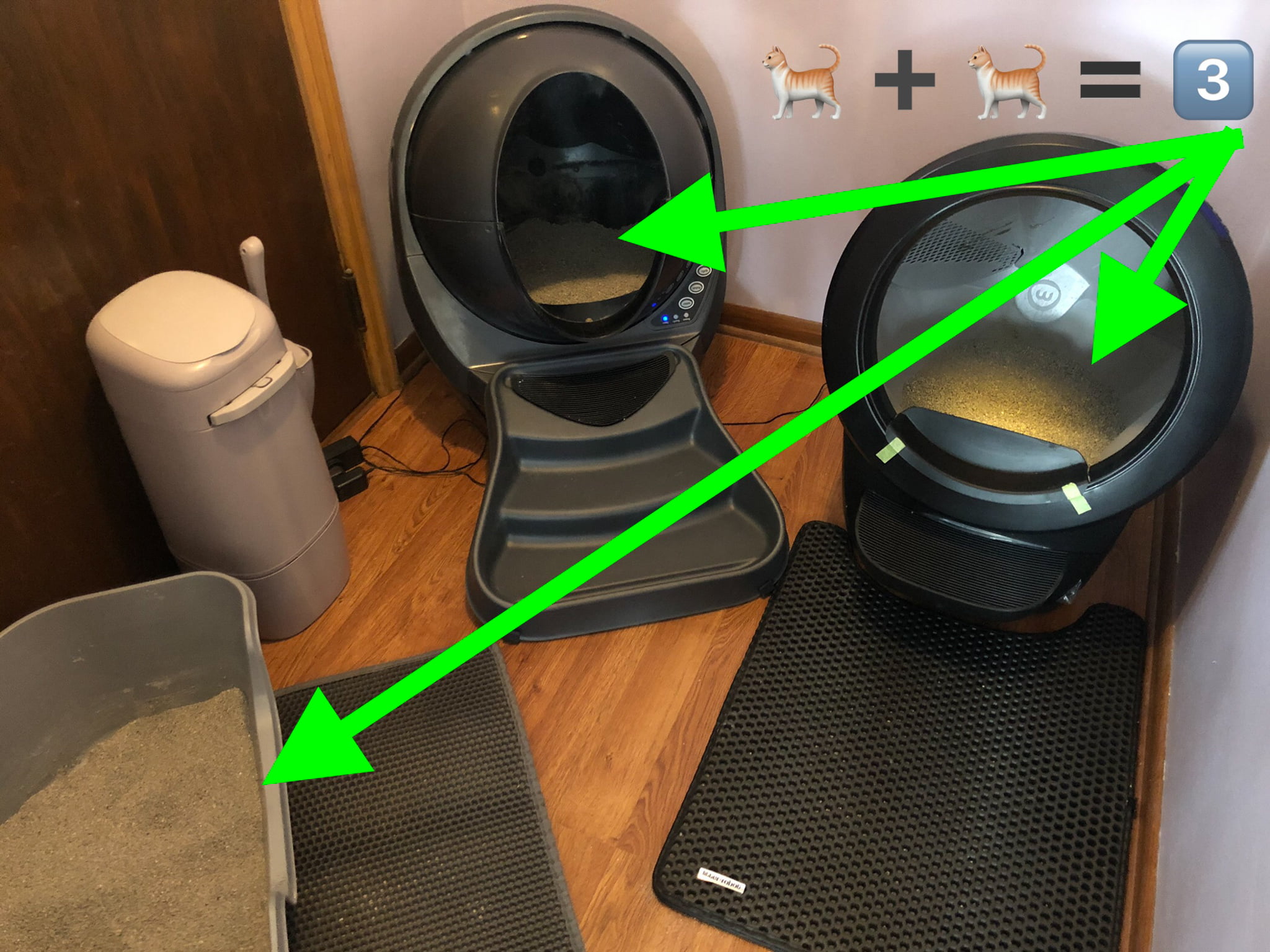
Offering different types of litter boxes, such as a high-sided, corner, or covered, will allow your cat to determine the box that is their favorite.
2. Clean the Box More Often
As we mentioned earlier, one of the most common reasons cats give up on their litter box is because of anxiety associated with the box – or the area around it. Cats are very sensitive to smells, so if you notice the box smells and is not being used, the first thing to do is clean it. If it’s not possible for you to clean the litter box as often as you should, you can try adding a box of baking soda to the litter box to help control the smell. Baking soda is also great for cats with sensitive paws as it is soft and comforting.
General rules for cleaning are:
- Scoop at least once per day and put the waste into a sealed bag or container
- Clean litter boxes once per week with warm water, unscented soap, and baking soda
- Clean accidents with an enzymatic cleanser (never use ammonia-based cleaners)
LesbiGreen!
At LesbiGreen.com we’re always looking for ways to be mindful of our community, the earth’s environment, and our impact on it. Some cat litter boxes you choose will have negative impacts for 1,000 years or more. We’ll point out the LesbiGreen picks but remember – a cat’s litter box can be a container and litter that you buy, scoop, and clean — or it may end up being your clothes closet if your cat doesn’t like it, or it’s not cleaned often enough. Please choose the best litter box for you and your cat.
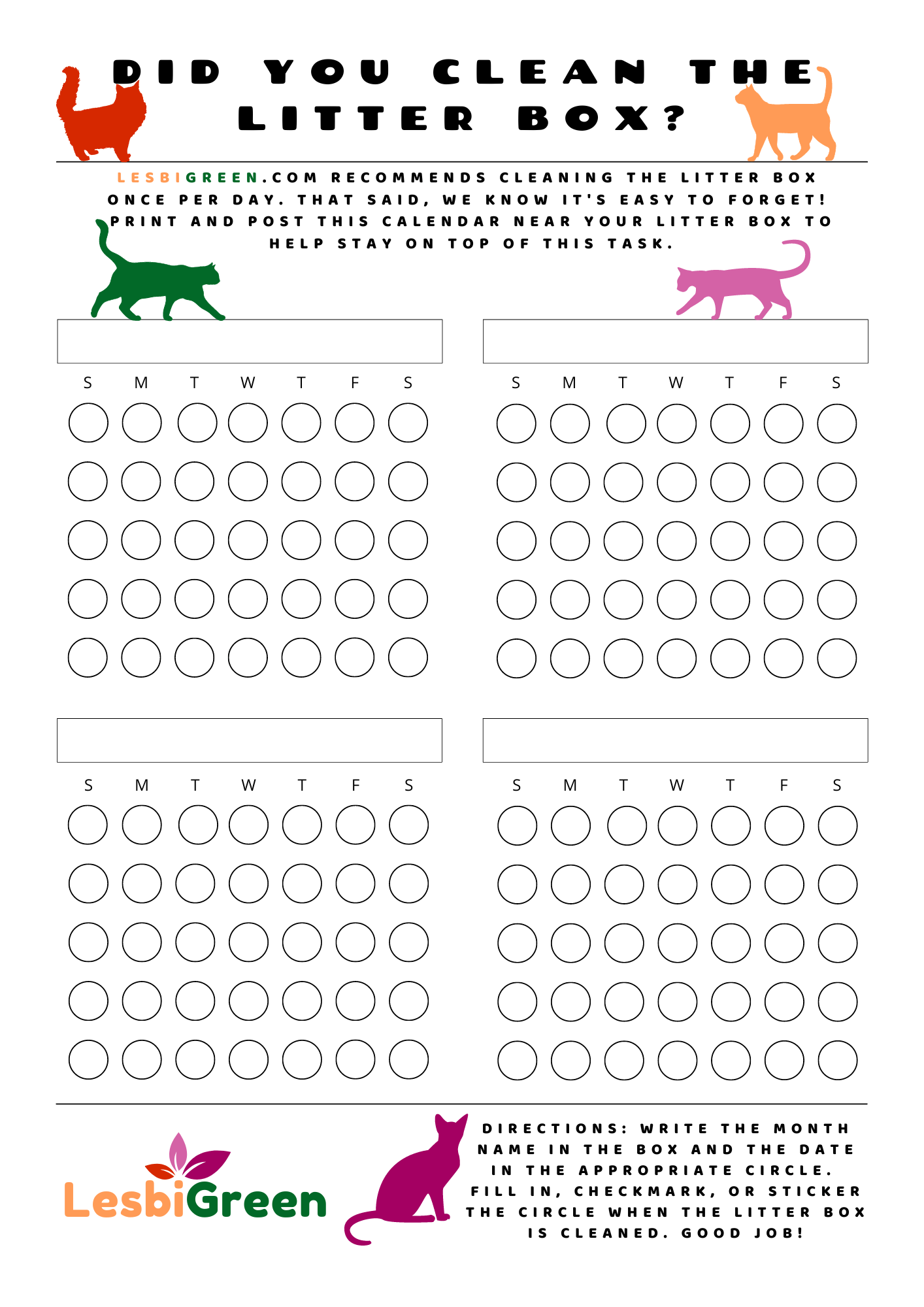
Download our Litter Box Cleaning Calendar!
We know it can be hard to remember to clean the litter box every day, so we made a cleaning calendar that you can print out and use to keep track.
3. Use the Right Kind and Right Amount of Litter
If your cat is not currently using the litter you have in the box, they may just be trying to tell you they don’t like it. Some cats feel there’s not enough litter in the box. Some cats feel like there’s too much. While there are a number of different cat litter brands on the market today, finding the right litter for your cat might take some experimentation. The right litter will depend on your cat’s age, health, behavior, and needs.
In general, if your cat loves to play in the litter, it is probably too coarse for them to use.
If you have a kitten, use a litter specially designed for kittens to avoid them ingesting the litter.
If you have an elderly cat, look for a soft litter that is easier on their paws.
4. Adjust the Lighting
Some cats will avoid their litter box at night as they are nocturnal creatures and prefer to be active when it is dark. If you are having issues with your cat avoiding the litter box in the evening, you can install a motion-detector light in the room where the litter box is. Similarly, if there is too much light in the room, it can be overwhelming for your cat and cause stress that forces them to avoid the litter box. If you want to use a light in your room, consider using a red light. These lights create a gentler and less intrusive light that is less likely to cause anxiety and stress.
5. Bored Cats are Problem Cats
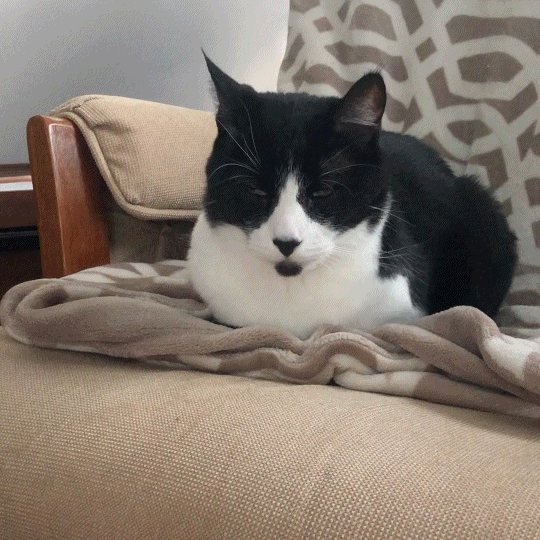
If you are trying to figure out why your cat has stopped using the litter box, boredom could be a factor. Cats are natural explorers and problem-solvers, but when they are confined to the house, they have to find other ways to entertain themselves. An out-of-control kitten can turn into a destructive adult cat.
If you have a kitten that is out of control, you have to be proactive about managing their energy and finding safe ways for them to burn it off.
If a kitten is bored, they will find ways to entertain themselves that are not welcome. Boredom can also lead to anxiety and destructive behavior, both of which can make it difficult for a cat to use the litter box.
6. Watch for Red Flags 🚩🚩 and Find Out Why
If you find your cat has stopped using the litter box, or they are visiting it less frequently, there will likely be clues as to why. Cats communicate with their owners on a regular basis to let us know how they are feeling, but we often don’t understand their language. Whenever you notice a change in your cat’s behavior, try to figure out why it is happening. If your cat is avoiding the litter box, look for red flags such as a change in their diet, a new person in the house, stress from too much company, a change in their routine, or a medical issue.
If you suspect your cat has been exposed to a new substance or toxin, visit your veterinarian as soon as possible. With a little extra observation and a lot of patience, you can usually figure out why your cat is avoiding their litter box.
7. Have a Conversation with Your Vet
If you have used this list and have still not been able to solve the litter box problem, it might be time to think outside the box and have a conversation with your vet. While litter box problems can be managed, they should never be ignored.
If your cat has stopped using their litter box and you have ruled out all of the issues listed above, it is possible that they are suffering from a medical issue that is causing them pain or discomfort. Your vet can complete a urine test to determine if there are any abnormalities in the urine, they can perform a fecal test to see if anything abnormal is being passed through the stool, and can check for signs of an infection. If the vet finds an infection, they can treat it and hopefully get your cat back in the box as quickly as possible.

Conclusion
Cats are territorial creatures, and the litter box is no exception. To avoid litter box issues, you must be aware of your cat’s needs and be diligent about meeting them. You must also understand that some cats are just finicky and may require more patience than others. It may take time to find the right litter, placement, and routine that works best for your cat. If you notice your cat has stopped using the litter box or they are visiting it more or less frequently, there are likely several reasons why.
While it may be annoying and frustrating, there are many things you can do to try and resolve the issue. If you notice your cat is avoiding the litter box, try to identify the reason why, and then use this list to help you find a solution.
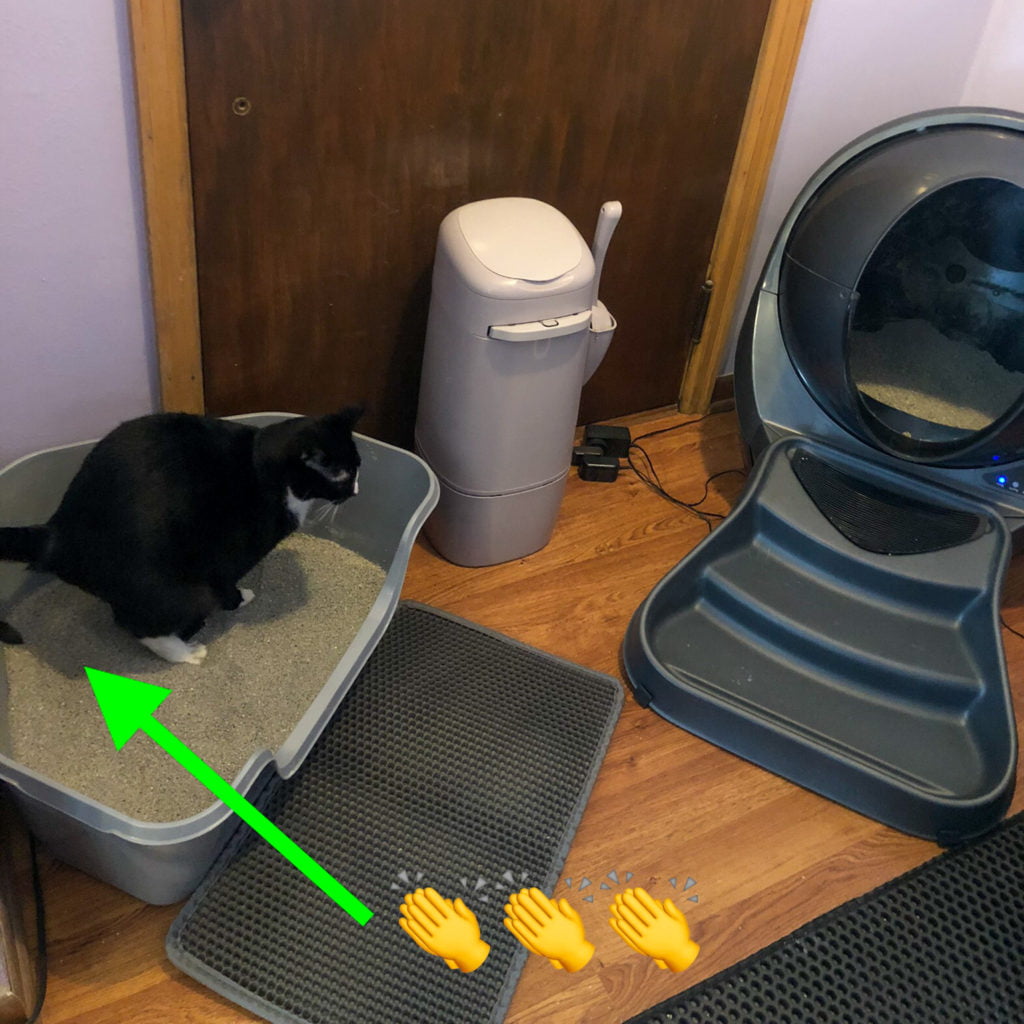
Warning:
If you were to applaud your pooping cat, they may develop a litter box problem.

Get Your FUN BOOK Today!
This Eco-Friendly FUN BOOK is a collection of activities to share our environmental appreciation of our planet – and celebrate our existence on it!
We’ve included planners and reminders that highlight the importance of sustainable stewardship of our planet while you’re living your life.

